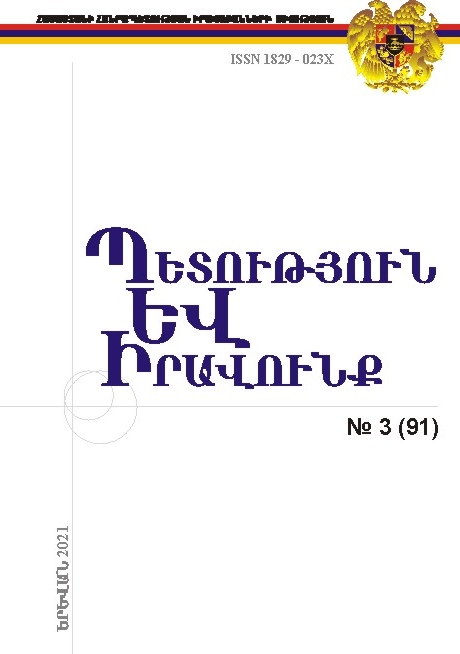PECULIARITIES OF QUALIFICATIONS OF CRIMES IN CASE OF VALUE-BASED ABDUCTIONS (COMPARATIVE ANALYSIS OF THE ACTING AND NEW RA CRIMINAL CODE)
DOI:
https://doi.org/10.46991/SL/2021.91.023Keywords:
qualification of crimes, evaluative concepts, interpretation of criminal norms, legal certainty, discretion of the law enforcement officer, significant damage, other grave consequences, dangerous for the lives of many people, other personal interests, force majeure, helpless state, vulnerability, real danger, public appealsAbstract
The effectiveness of the fight against crime and the legitimacy of this process depend on the content of the Criminal Code. No one shall be found guilty of a crime and be punished unless it is expressively provided by law (nullum crimen, nulla poena sine lege). The task of the legislature is to define the specific act that is considered a crime and the punishment provided for it in a clear and certain manner, since a person cannot be held liable for an act that does not satisfy the principle of legal certainty. However, in a number of articles of both current and new (signed on May 27, 2021, will enter into force on July 1, 2022) RA Criminal Codes, a large number of evaluative concepts are used. Therefore, within the framework of this work, we studied evaluative concepts (signs) used both in the current and in the new RA Criminal Codes to identify problems arising in the process of their interpretation and qualification of crimes. To ensure the systematization of the analysis, we examined the evaluative concepts of objective and subjective elements of crimes.
Downloads
Published
Issue
Section
License
Copyright (c) 2022 State and Law

This work is licensed under a Creative Commons Attribution-NonCommercial 4.0 International License.

